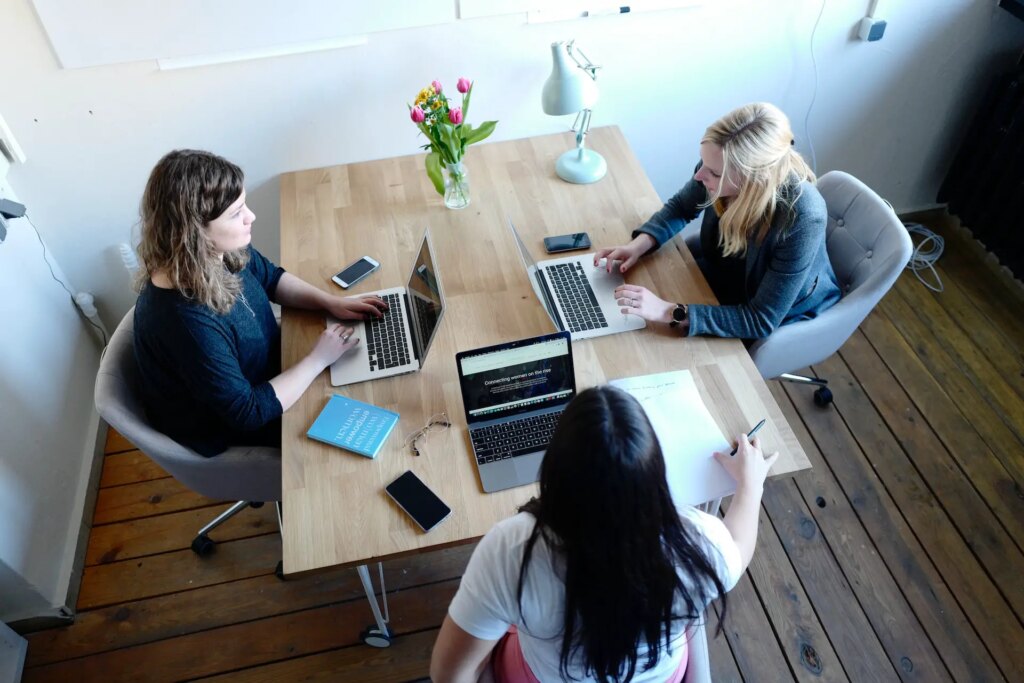How To Effectively Lead a Team: The 15 Critical Practices

In this new article, you will find out how to lead a team effectively.
Being the leader of a group can be a challenging task. As chair, it’s your job to maintain unity and make sure the group operates efficiently as a team. Regardless of whether you lead a group at work, school or amongst friends, having a robust and competent leadership style is crucial.
To lead effectively, start by cultivating trust and positive relationships amongst group members, handling all group discussions and conflicts efficiently, and being prepared to assign tasks and achieve goals.
How to Lead a Team Effectively:
1. To build a cohesive team, consider doing an ice breaker activity.
This is an excellent way to bond with your group members, particularly during the initial meeting. Make sure everybody gets an opportunity to introduce themselves to each other and feel snug.
One example of an icebreaker is going around the group, with everybody sharing their name and private facts. For students, you can ask them to share what they majored in and the most interesting thing they did during their break. If the group is made up of pros, you could ask them to share their favourite jobs and hobbies outside of work.
2. Increase group cohesion by incorporating team building exercises.
This activity can help in familiarizing individuals with one another and fostering trust within the group. It is optimal for planning team building exercises in the early stages of group formation. Keep doing this activity, particularly if you notice any problems in the group.
For example, you could try an easy team building exercise like having everybody sit down and make eye contact, which can help build comfort and trust.
3. Foster positive communication between group members.
Good communication plays a crucial role in building trust and positive relationships within a group. As a leader, it is crucial to encourage open and honest communication amongst group members.
Create an environment in which the group feels snug expressing themselves and sharing information freely. Clearly state your expectations for good communication and stress its importance as a leader.
For example, you could say something like “As a leader, I believe in clear communication and I expect everyone in a group to communicate openly and effectively with one another.”
4. Provide opportunities for group members to interact informally.
To maintain a relaxed and friendly atmosphere in the group, allocate time for socializing. Arrange informal meetings before and after formal group meetings where members can chat, enjoy drinks, and socialize. This can help create a more trusting and comfy environment within the group.
As the leader, you can even plan social events for the group to take part in, where they can bond and get to know one another in a casual setting. This can help build trust and strengthen relationships by allowing members to see one another as individuals and colleagues.
5. Set up meeting rooms to facilitate discussions.
Before the group arrives, arrange chairs and tables to facilitate discussion. Form a circle or place chairs around one table, ensuring there’s enough seating for everybody in the group. This arrangement will encourage eye contact and make group conversations smoother.
Also, have the materials needed for the meeting easily accessible, either on a table or by the door. This will ensure a smooth start to the meeting and make materials available to the group.
6. Establish guidelines for group discussion.
To ensure productive and harmonious group discussions, set clear guidelines from the start. Emphasize that group discussions are a platform where everybody has the opportunity to express themselves.
Make it clear that interrupting other people or talking about them is not acceptable. Urge all group members to treat one another with respect and respond in a respectful manner.
You can present the guidelines as handouts during the first group meeting or announce them during the meeting so everybody knows the rules for discussion.
7. Use open-ended questions.
Encouraging group discussion can be enhanced by asking open-ended questions. Present thought-provoking, open-ended questions to the group. Ask questions that require more than an easy yes or no answer. Make sure the questions are short and to the point so they’re easy to understand.
For example, rather than asking “Did you like the presentation?” You could ask “What did you think of the presentation?”
8. Pay attention to who talks a lot and who is not vocal in the group.
Make sure that everybody has the opportunity to share their thoughts and concepts by encouraging those who may not speak out often. You can do this by asking people specific questions or by making general statements to encourage everybody in the group to take part.
9. Promote attentive listening in groups.
If there’s conflict or tension in the group, encourage everybody to practice attentive listening. This helps everybody to hear and understand each other, and to respond wisely.
As the group leader, set an example of attentive listening (1) by engaging in one-on-one conversations with group members. Show you are paying attention by making eye contact, using open body language, and nodding or smiling while listening.
After the person has finished speaking, repeat back what you heard to confirm your understanding, such as, “So what I understand from what you said is…” Then, once they’ve confirmed that you understand what they meant, you can respond accordingly. That.
10. If there’s a problem amongst group members, approach the situation directly and work with the group to find a solution.
Express your concern about the conflict using “I” statements. Encourage the group to discuss the problem by asking open questions.
For example, you might say, “I sense some friction between the groups. How do you all feel about this situation? or “I see a disagreement. Can we talk about it as a group and work it out together?
11. If group conflict requires individual attention, arrange a private meeting.
If you see a disagreement between two group members, separate them from the rest of the group and ask if they would be willing to discuss it privately with you. This personal approach can make it easier for individuals to express themselves freely and openly, rather than in front of a large group.
12. As a group facilitator, it is important to keep track of tasks and goals.
To keep the discussion focused, create an agenda for each group meeting (2). Plus, make a list of tasks or goals that need to be accomplished and share them with the group.
You can distribute lists or display them during the meeting for everyone to see. If the group is having an online meeting, email the list to attendees. And once a task is complete, tick it off the list to give the group a sense of accomplishment.
13. Assign tasks to specific group members.
This can help break larger, more complex tasks into manageable chunks. Be sure to clearly communicate the roles and responsibilities of each group member. You can write down each task and who is responsible to ensure everyone is aware of their role in the group effort.
For example, if the group is hosting a charity event, you could assign some members of the group the task of promoting the event and have others handle procuring necessary equipment.
14. Provide support to group members in need.
Observe how members work together, and if someone seems to be having a hard time, offer to help them and encourage others in the group to do the same. Don’t micromanage the group, but pay attention to any members who might need help.
For example, if a member is having trouble with an assignment, offer your support and suggest that they work with another member to get the job done.
15. Show appreciation for the group.
As a leader, it is important to appreciate the effort and hard work of the group. Show your support by acknowledging their accomplishments through words of praise and acts of kindness. This will help the group feel valued and motivated to continue their good work.
For example, you could express your gratitude by saying, “You all did such a great job at the charity event. I really appreciate your hard work. I couldn’t have done it without your support.”
You can even show your appreciation by treating the group to something to eat or drink as a thank you for their dedication.
To lead a group effectively, you can:
Encourage active listening in groups and model it yourself. Work with group members to resolve any issues and have private conversations when necessary
Prepare agendas and task lists and delegate tasks to specific group members. Support group members who need help and reward the group when tasks are completed.
By doing this stuff, you can foster positive and productive group dynamics and ensure everyone seems to be working effectively together.
I want to thank you for taking the time to read my article on how to lead a team effectively. I actually hope that its content has been of good help to you.







